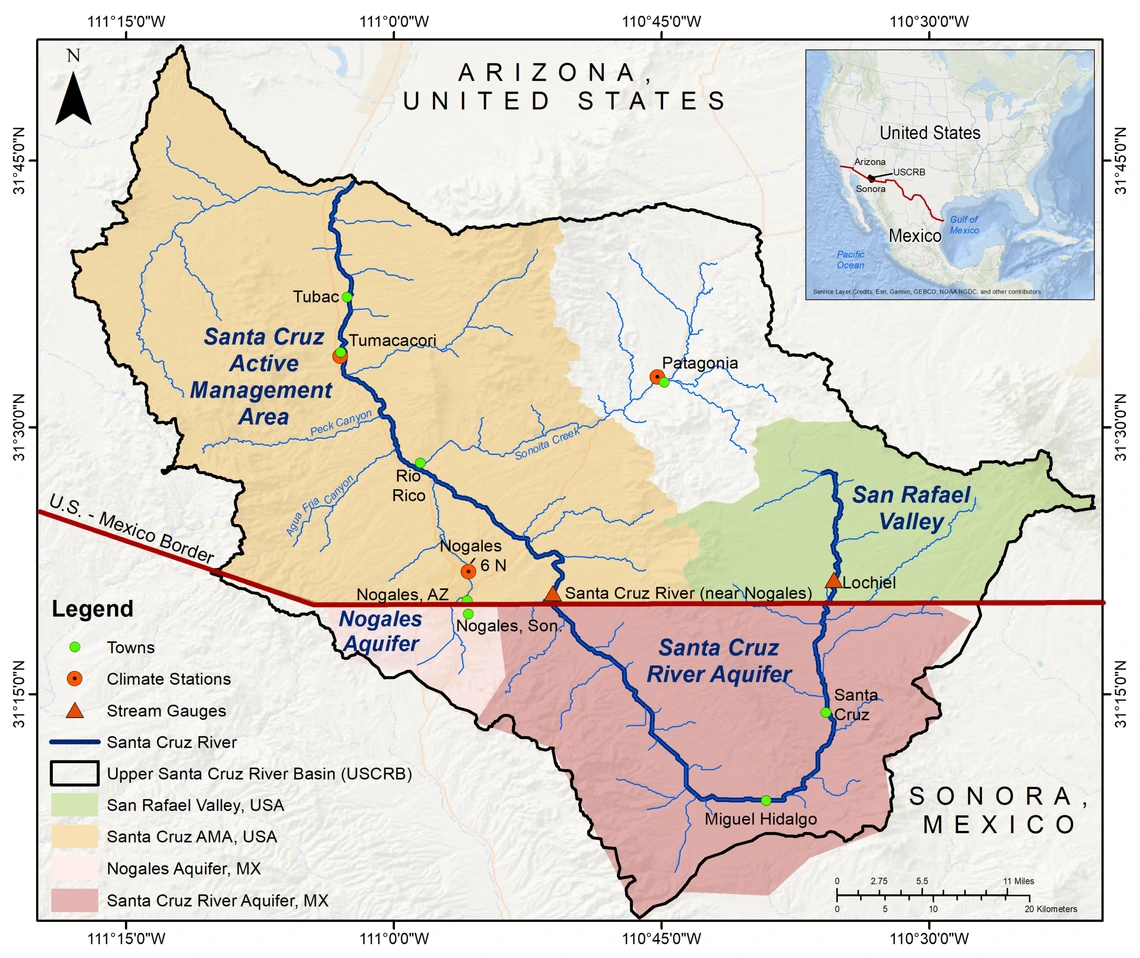New Publication on the Transboundary Upper Santa Cruz River Basin
June 4, 2021
Image

 The Upper Santa Cruz River Basin (USCRB) stretches across the US-Mexico border in Southern Arizona. A new publication in an upcoming Special Issue of the journal Water looks at the impact of climate change on the precipitation-dependent water resources of this transboundary basin. According to the article, the USCRB has experienced significant declines in average precipitation, and since 1980, year-round average temperatures have increased. Within this context, the article’s authors, Eylon Shamir, Elia M. Tapia-Villaseñor, Mary-Belle Cruz-Ayala, and Sharon B. Megdal, surveyed relevant studies examining climate projections for the four weather systems that impact the USCBR’s water resources, which are the summer North American Monsoon, the winter cold fronts and atmospheric rivers, and the occasional tropical cyclones. The article finds that there are significant uncertainties and, at times, contradictory trends across the precipitation projections of the weather systems studied. Despite these uncertainties, the authors suggest that the current drying trend and projected decline in precipitation “serve as a pressing call for planning and actions to attain sustainable water resources management that reliably satisfies future demands.”
The Upper Santa Cruz River Basin (USCRB) stretches across the US-Mexico border in Southern Arizona. A new publication in an upcoming Special Issue of the journal Water looks at the impact of climate change on the precipitation-dependent water resources of this transboundary basin. According to the article, the USCRB has experienced significant declines in average precipitation, and since 1980, year-round average temperatures have increased. Within this context, the article’s authors, Eylon Shamir, Elia M. Tapia-Villaseñor, Mary-Belle Cruz-Ayala, and Sharon B. Megdal, surveyed relevant studies examining climate projections for the four weather systems that impact the USCBR’s water resources, which are the summer North American Monsoon, the winter cold fronts and atmospheric rivers, and the occasional tropical cyclones. The article finds that there are significant uncertainties and, at times, contradictory trends across the precipitation projections of the weather systems studied. Despite these uncertainties, the authors suggest that the current drying trend and projected decline in precipitation “serve as a pressing call for planning and actions to attain sustainable water resources management that reliably satisfies future demands.”
